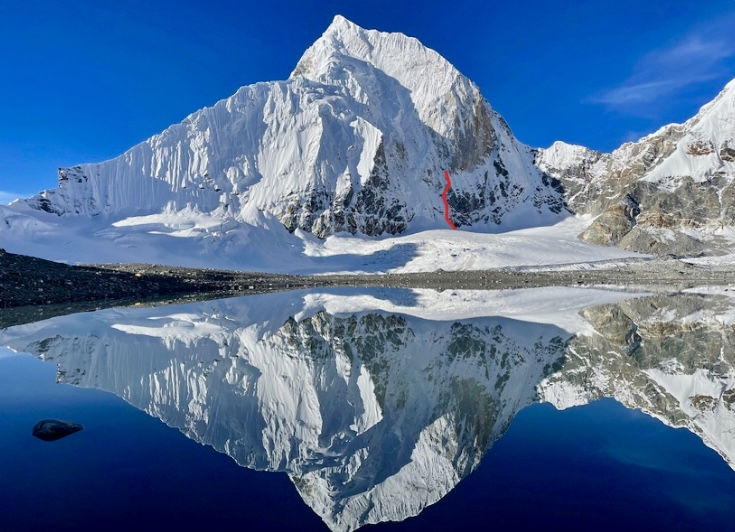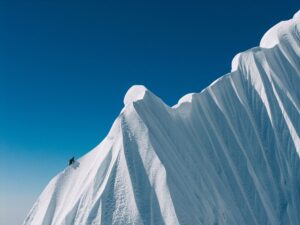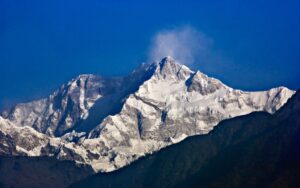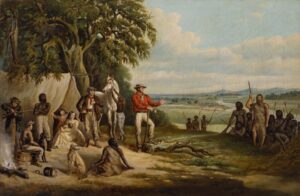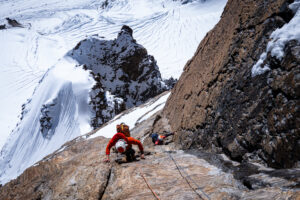Our Forgotten 7,000’ers series continues with the climbing history of 7,362m Kirat Chuli, a striking, rarely attempted peak in Sikkim, in the Indian Himalaya.
Also known as Tent Peak, Kirat Chuli has a prominence of 1,168m and is part of the northern section of the Kangchenjunga massif on the Nepal-India border.
The mountain lies between the Teesta River to the east and the Koshi River to the west and is surrounded by notable neighbors: Kangchenjunga and Gimmigela Chuli to the south, Siniolcho and Simvo to the southeast, Drohmo to the northwest, and Pathibara and Langpo Peak to the north.
Kirat Chuli’s remote location, technical challenges, and harsh weather has limited mountaineering. From the Nepal side, the approach is complicated by heavily crevassed terrain.
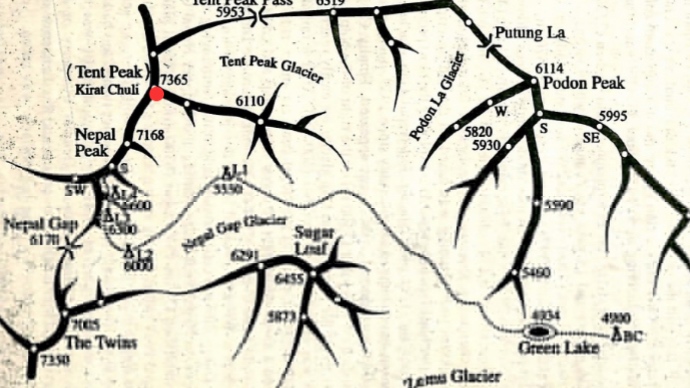
Kirat Chuli, red dot, and the surrounding glaciers. Photo: Himalayan Club
The mountain holds cultural and religious importance for the Kirat, Limbu, and Rai communities. In the Limbu language, Kirat Chuli means “Kirat People.” They believe the mountain is the abode of Yuma Sammang, an omnipotent goddess associated with knowledge, protection, and spiritual well-being.
Kirat Chuli’s other name, Tent Peak, was likely coined by early Western explorers because of its pyramid tent shape.
First reconnaissance
In 1910, Scottish chemist and mountaineer Alexander Mitchell Kellas scouted the Kangchenjunga region, including Kirat Chuli, as part of his broader exploration of the Sikkim Himalaya. Kellas’ goal was to study the geography, assess potential climbing routes, and gather data on the effects of altitude. He approached from Sikkim, likely via the Zemu Glacier.
Although Kellas didn’t attempt to climb Kirat Chuli, he did climb 6,965m Langpo. Interestingly, Langpo has had only two ascents, both by Kellas.
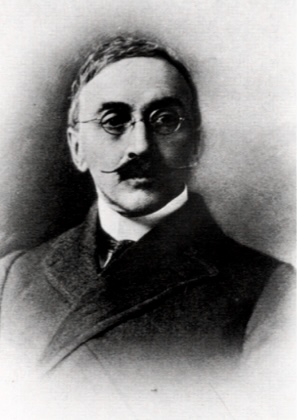
A.M. Kellas (1862-1921). Photo: Alpine Journal
First attempts on Kirat Chuli
In the summer of 1936, a four-man German party led by Paul Bauer attempted to climb Kirat Chuli by two routes: by the south ridge from the east and by the south ridge via 7,177m Nepal Peak. The Germans eventually abandoned their attempt at the top of Nepal Peak because of poor conditions.
One year later, in the spring of 1937, a three-man Swiss-German party arrived, led by Ernst Grob and supported by five Sherpas above base camp. They chose the same route as the 1936 team, the south ridge from Nepal Peak.
The Himalayan Database does not provide much information about this attempt, and it is unknown how high they reached or why they retreated.
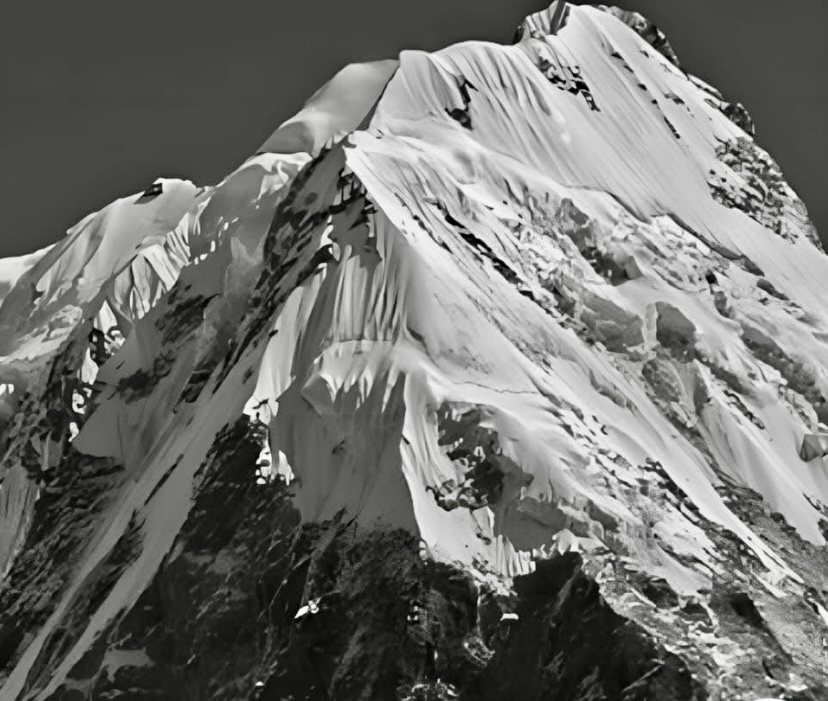
Kirat Chuli. Photo: The Mountains of India
The only ascent
In the spring of 1939, Grob returned, this time with Germans Herbert Paidar and Ludwig Schmaderer and supported by Ajiba Sherpa, Genden Umdu Sherpa, Ila Sherpa, and Ila Tenzing Sherpa. The route was the same. After approaching the Zemu Glacier, they targeted the south ridge via Nepal Peak.
They established several camps along the glacier system, following the technical ridge of mixed snow and rock. On May 29, Grob, Paidar, and Schmaderer topped out.
The expedition also ascended Langpo South and attempted Gimmigela Chuli and Pyramid Peak.
To date, this is the only successful ascent of Kirat Chuli, though there have been eight further attempts on the mountain.
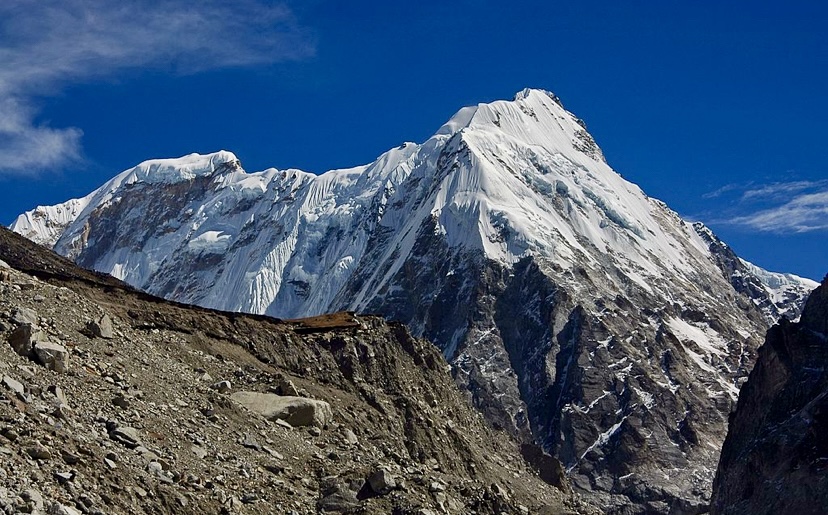
Nepal Peak, front, and Kirat Chuli. Photo: Wikimedia
Further attempts
In the autumn of 1985, Mike Kefford led a large UK-Nepal expedition up the same route. They turned around at 6,735m on Nepal Peak because of strong winds and heavy snowfall.
The next attempt came a year later, in the autumn of 1986, when a French expedition led by Dominique Hembise attempted the same route. The outcome was the same: They abandoned at 6,650m because of snow, wind, and Hembise’s frostbite. The French expedition reported especially dangerous avalanche conditions at their Camp 1, located halfway between Cross Peak and Nepal Peak.
In the spring of 1995, an Austrian party led by Kurt Elbl attempted the southwest ridge from Sikkim via Nepal Peak. Their highest point was 7,150m, where bad weather ended their climb.
In the autumn of the same year, a German party led by Wolfram Schroeter reached 7,150m on Nepal Peak, where they ran out of time and turned around.

The east face of Kirat Chuli. Photo: Wolfram Schroeter
Other attempts by different routes
There were four other attempts via different routes.
In the autumn of 2000, Slovenian Andrej Stremfelj and his partners aimed to ascend Jongsang, Pyramid Peak, and Kirat Chuli via its south face. The Slovenians worked in small groups; Stremfelj and two partners were attempting Kirat Chuli when Andrej Markovic, climbing on Jongsang in another group, suffered a fatal fall. Stremfelj’s team called off their expedition.
Two years later, another Slovenian expedition targeted the west face. Gregor Kresal’s party reached 6,700m but ran out of time before reaching the summit.
In autumn 2007, the Slovenian Kangbachen Expedition, led by Tone Skarja, also tried the west face. Deep snow and avalanches stopped them below 5,800m.
The most recent registered attempt in The Himalayan Database is from 2022. U.S. climbers Spencer Gray (leader), Rushad Nanavatty, and Matthew Zia targeted the north face but turned around at 6,000m in bad conditions.
Kirat Chuli remains an elusive prize. Its rugged terrain, icy slopes, and unpredictable conditions have yielded temptingly few triumphs.
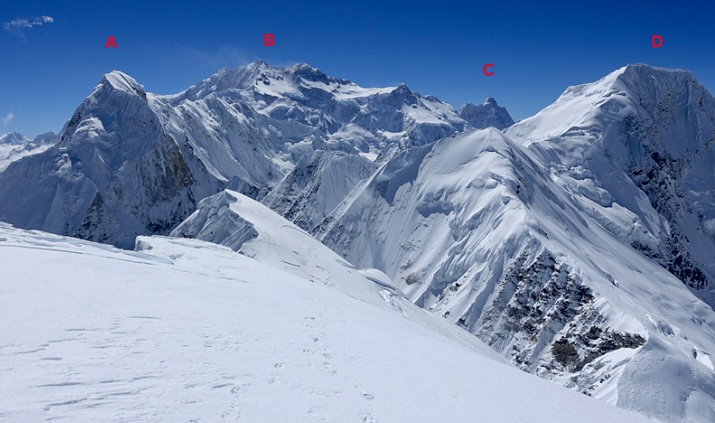
Looking south from Langpo along the frontier ridge to: (A) Kirat Chuli, (B) Kangchenjunga, (C) Jannu, and (D) Pathibhara Chuli. Photo: Spencer Gray
